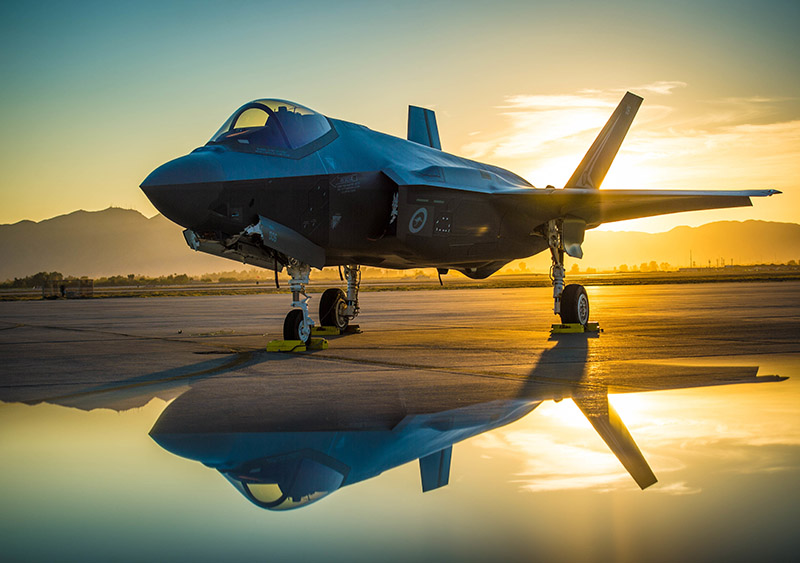In the field of military aviation technology, no name stands out and captures attention more than the Lockheed Martin F-35 Lightning II. With its outstanding features and advanced technology, the F-35 is not only a symbol of military strength but also a testament to the continuous development of modern aviation engineering.

Revolutionary Design
The F-35 Lightning II is designed with a perfect combination of stealth capability, speed, and firepower. Its advanced stealth system makes it difficult to detect by enemy radar, providing a significant tactical advantage in modern warfare. Additionally, the F-35 has the ability to perform vertical takeoffs and landings, allowing for flexible operations in various terrains.
Firepower Strength
The F-35 is equipped with a diverse and powerful array of weapons. This aircraft can carry a range of munitions, from air-to-air and air-to-ground missiles to precision-guided smart bombs. Its ability to carry and deploy these weapons enables the F-35 to undertake various missions, from air defense and ground attack to reconnaissance.

Leading-Edge Technology
One of the standout features of the F-35 is its state-of-the-art sensors and electronics. The AN/APG-81 AESA radar system provides highly accurate target detection and tracking, while the advanced avionics system allows pilots to control the aircraft easily and efficiently. Furthermore, the F-35 is equipped with a helmet-mounted display system (HMDS) that provides pilots with enhanced situational awareness and quick response capabilities in combat scenarios.

Combat Efficiency and Versatile Applications
The F-35 Lightning II is not just a combat aircraft but a comprehensive combat system. With its ability to connect and share information with other weapon systems and aircraft, the F-35 enhances the overall combat effectiveness of the air force. The different variants of the F-35 also meet the diverse needs of various military branches, including the Air Force, Navy, and Marine Corps.
The Future of the F-35
With over 600 F-35s produced and serving in the military forces of numerous countries, the future of the F-35 Lightning II is bright. Lockheed Martin continues to upgrade and improve this aircraft to ensure it remains at the forefront of modern warfare. New technologies such as artificial intelligence and autonomous control systems are being researched for integration into the F-35, promising significant advancements in the future.

Conclusion
The Lockheed Martin F-35 Lightning II is not just a combat aircraft; it is a symbol of strength and modern technology. With its superior design, firepower, and advanced technology, the F-35 will undoubtedly continue to play a crucial role in protecting and maintaining the national security of its possessing countries. In the future, with continuous improvements and developments, the F-35 will remain one of the world’s leading combat aircraft.





